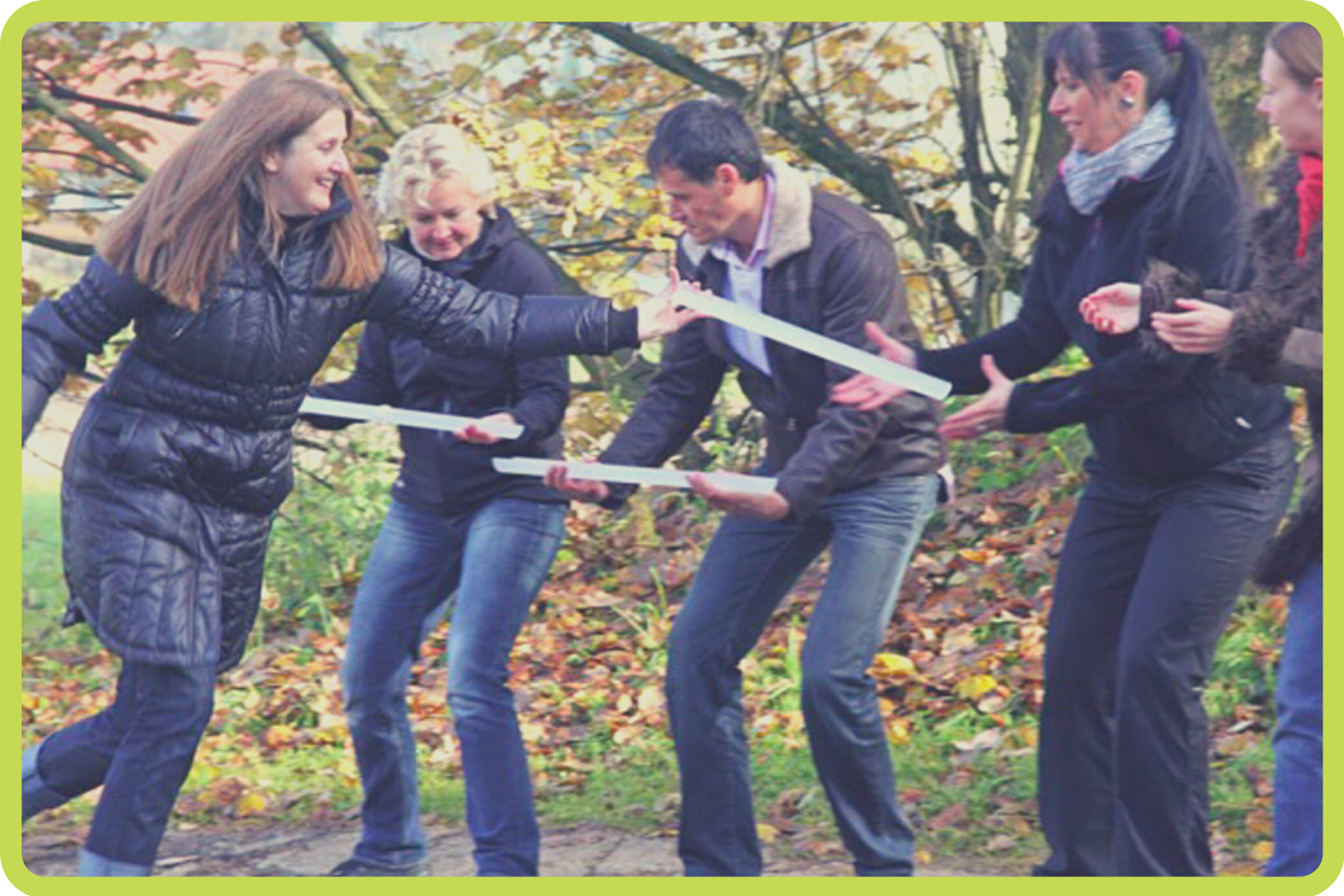my favourite learning tool or 5 great ways to use pipes & balls
Pipeline is absolutely my favourite and most used experiential exercise because of its versatility and the way it never fails to create a high-energy environment with maximum involvement and laughter.
For those of you who are not sure what the exercise entails, you can see a short video below.
Basically, Pipeline involves usually 3 pieces of pipe and one ball per team and they work together to transport the ball to a particular receptacle while adhering to the following basic rules…
The ball must remain in motion at all times. If it stops, goes backwards or is dropped, you need to start again.
People with the ball in ‘their’ pipeline must stand still.
Your team need to take turns having the ball i.e. after you have had the ball, all team members must have it before you have it again!
The ball must not be touched!
1. the classic
Used primarily for looking at teamwork and inter-team working, the classic version of the exercise involves multiple teams working to deliver their ball into a box with all team’s balls arriving within 2 seconds of each other. It’s quite a challenge and is rich with review possibilities linking in to how well organisational departments co-ordinate their activities and how this can be improved.
2. process improvement
One or multiple teams can be tasked with getting their ball safely to the box within a given time period. Start off by giving them 4 pieces of pipe and then cutting to 3 and finally down to 2. Review the task, looking at the processes within their business that could be significantly shortened or simplified. What principles from the exercise can be applied? This works well for programmes on process improvement or for looking at the importance of challenging the process on leadership programmes.
3. supply chain
This has worked for me particularly well in examining an organisation’s supply chain, however it can be used equally well to look at how other departments that have interdependencies in terms of work flow are operating. What I do, is to use the right number of pipes to represent the different parts of an organisation’s supply chain, for example manufacturing, warehouse, dispatch and I label the pipes with these titles. This means that the exercise has an extra layer of review in terms of discussing the process a product goes through to get to a customer and how well the ‘joins’ work. It is also possible to layer onto this a customer service focus by having a customer who the teams must communicate with about estimated delivery times in order to fit in with the customer’s own ‘just in time’ manufacturing process. Even better if the organisation supplies multiple products to that customer which need to arrive at different times so that all sub-teams need to communicate with each other as well as the customer. Works a treat and learning and discussion can culminate in a detailed action plan.
4. chinese whispers
I use this version of the exercise for reinforcing the importance of giving clear instructions as a manager. Send all of the participants bar one from each group out of the room and brief them verbally. Ensure the communication is two-way and that they fully understand the instructions. Next allow a new team member from each group to enter and be briefed by the first group member. Bring in team member 3 to be briefed by team member 2 whilst 1 remains silent. Continue the process and when all team members have been briefed and then allow the first team member to clear up any misunderstandings and give feedback to the other team members on the quality of their instructions. After that, do the classic version of the task and review with particular emphasis on the clarity and quality of communication.
5. freeform course opener
I have had such success with this exercise so many times, that I have got really confident about its many applications. Where I have a particular subject to tackle such as time management or middle management, I have begun the programme with a fairly classic version of the exercise and then asked…
How is this exercise like being a middle manager? Or
How is this exercise like managing your time?
Participants own metaphors are powerful for them and have been very fruitful. Purely from this question, I have been able to make a long list of links, which ends up matching closely my itinerary of subjects for the day. It’s brilliant.
This short article does not even begin to cover all the different ways I have used this exercise and I invite you to add your ideas below, or challenge me to tailor these simple tools to bring home a learning point that you need for your programme.


